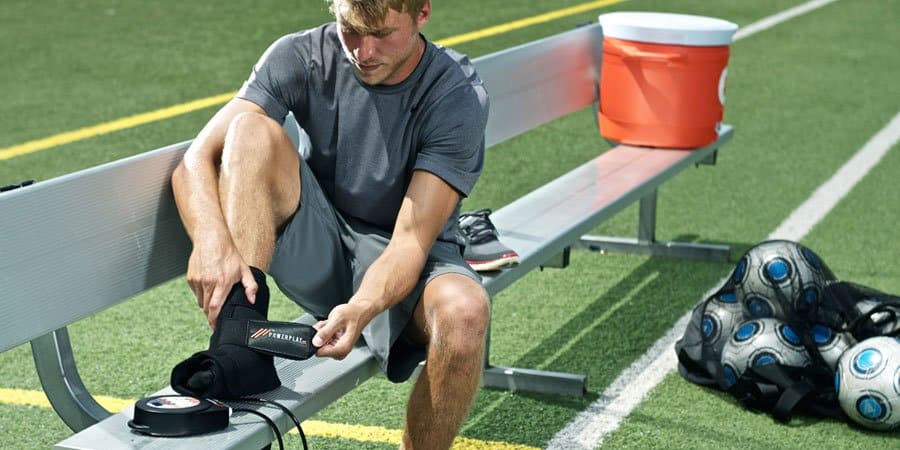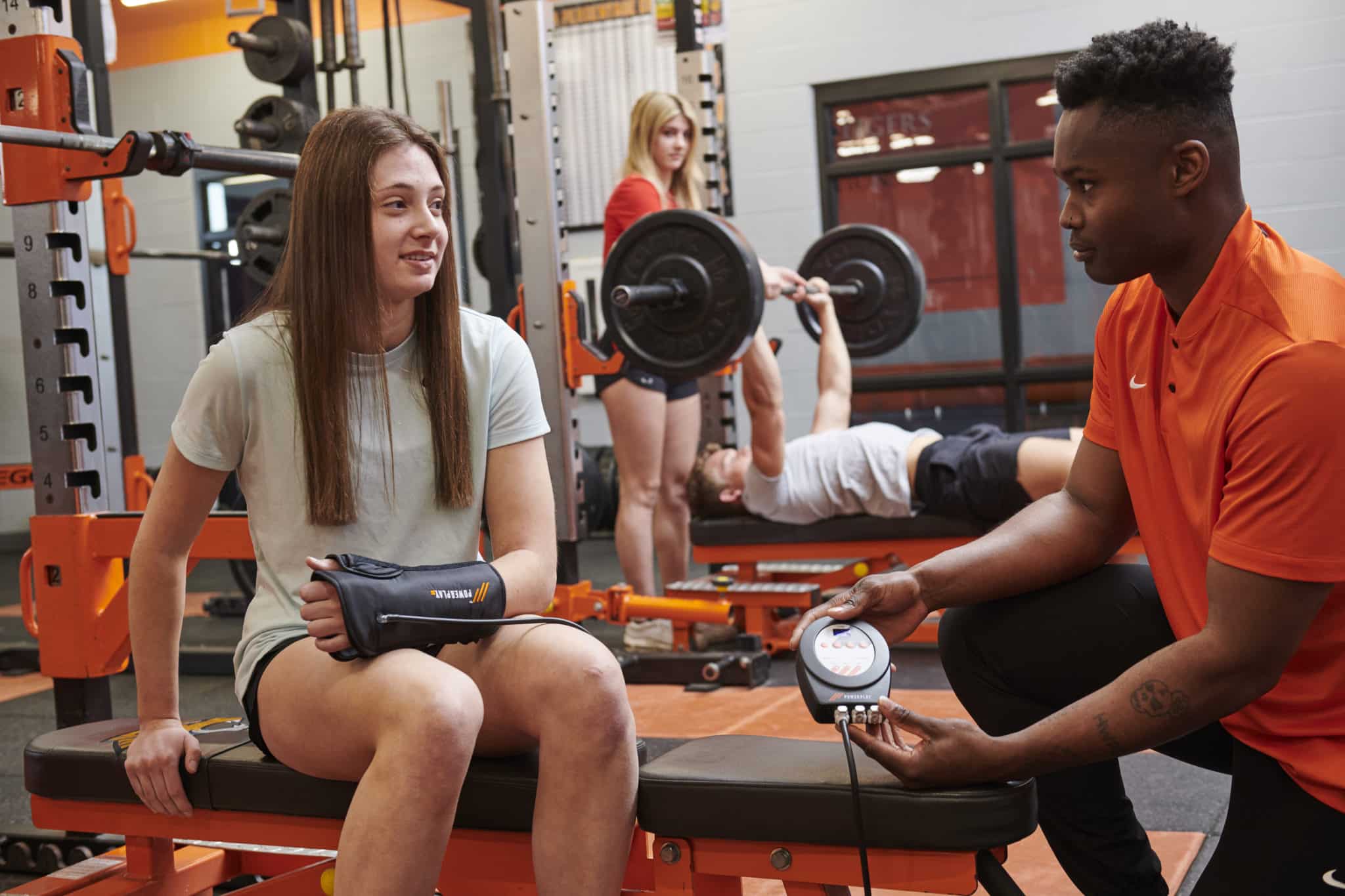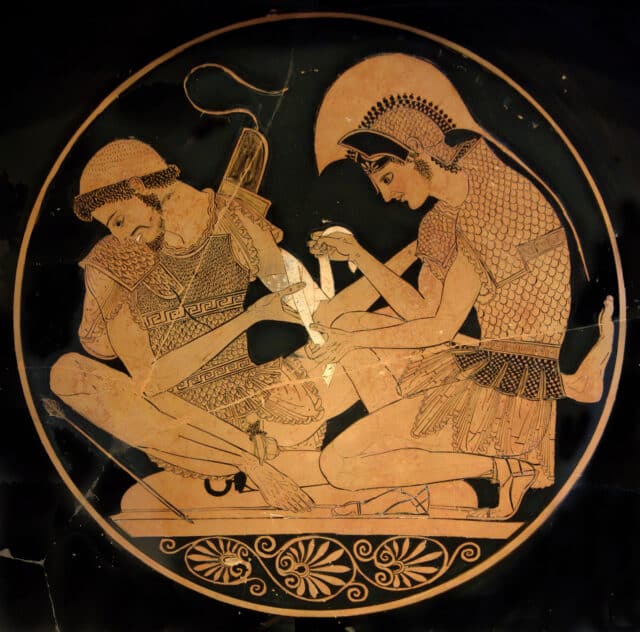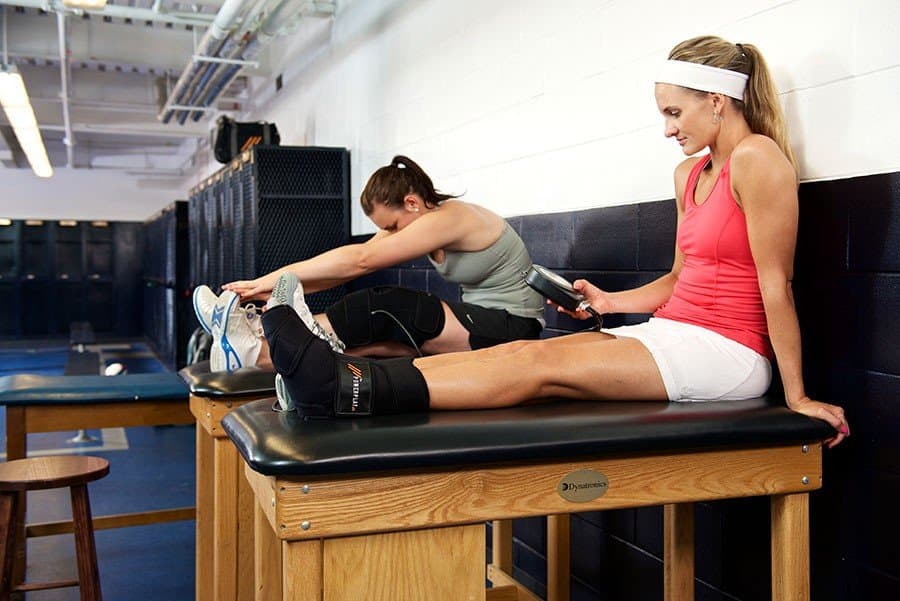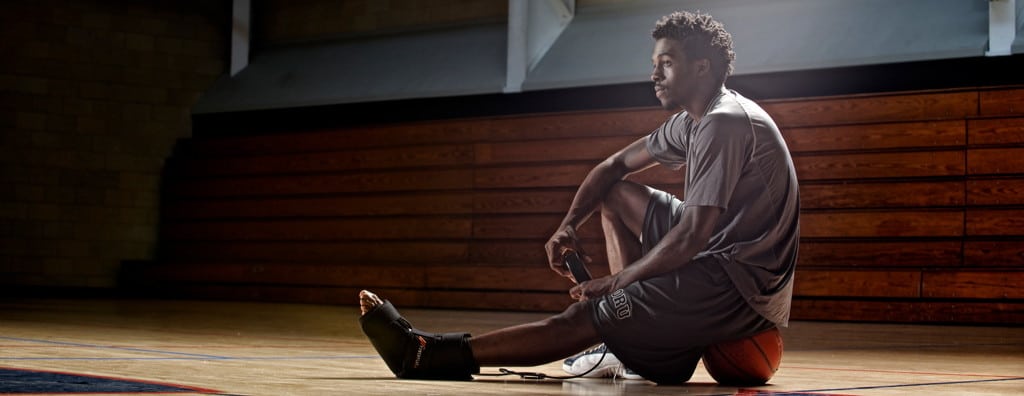We were flattered to have recently been reviewed by Certified Athletic Trainer Benjamin Towne on his blog, which you can find here. Below is his product review:
By Benjamin Towne, MA, ATC
Earlier this month, I was contacted to complete a product review for PowerPlay Portable Cold & Compression systems. I replied that I would be more than happy to do so. Before we begin, I offer that I am not receiving reimbursement of any kind, and offer my objective and unbiased view of the product.
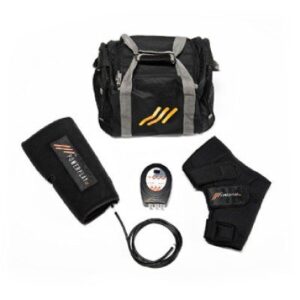
I was shipped the PowerPlay Standard Pack, which included the Cold and Compression Ankle Wrap and the Knee Wrap. The entire contents of the system, which was shipped in a convenient and small bag (14″ x 10.5″), weighed less than 10 pounds. My initial thoughts were that this is a fantastic, lightweight, portable system which would travel easily. As an ATC who travels, this would certainly be very easy to toss into my checked baggage. The product was clearly designed with efficiency and portability in mind. That said, it would work very easily in a standard sports medicine clinic as well.
The directions for each “unit” came with easy to read instructions, which included both written and diagram instructions. The instructions were quite simple and straightforward, covering everything from contraindications to battery life, true to electrical modality form. Set up only took 3 minutes, but I was fiddling around with it. By the third time I used it, I could set it up in under a minute and a half. Ease of use is a tremendous bonus with this product.
For the compression unit itself, these items were included:
1. PowerPlay Pump
2. Cloth Sleeve (this serves as a protective area for exposed skin)
3. Gel Pack (one each for ankle and knee)
4. Compression Wrap (one each for ankle and knee)

Prior to applying, the gel packs must be frozen for a minimum of one hour, remove from the freezer and then attach them to the inside of the Compression Wraps. This is done via velcro attachments, which fit quite snugly inside. You simply had to fit the patient, then attach the hose to one of the three ports on the PowerPlay Pump, which you then turned on. I love the fact that there were three different ports, as you can treat multiple regions/body parts at once. The pump is small, but very efficient and easy to use. It only has four buttons, a Power On/Off, and one each for the port of choice.
Once attached, you press the port of attachment, and choose a level of compression both appropriate and comfortable for the athlete. I did notice a discrepancy here, as the instructions indicate you can choose between 30 mmHg and 70 mmHg of pressure, however the pump only displays 50-70 mmhg, in 5 mm increments. Not a huge deal, but a discrepancy nonetheless. Once you set the pressure, the unit will automatically turn on and provide intermittent compression for a 20 minute time period, automatically shutting off at the conclusion. Again, the design is so convenient and easy to use, I could see myself utilizing this product on a very regular basis.

During it’s first trial run, I kept getting a “HI” message on the LED screen, which upon further inspection revealed cord compression (the athlete’s leg was compressing the cord, impeding airflow). Simply moving the cord was not difficult, as each compression wrap has a 5 foot long air hose, which I thought was well thought out. Not everyone likes to have a compression unit buzzing on their chest during treatment! If you needed a longer one, an additional 5 foot extension was located in the bag as well.

The compression was uniform and quite comfortable, as opposed to say, plastic wrap around an ice bag on a joint, which can be effective but also uncomfortable. It was also surprisingly cold (in a good way), which surprised me. Sometimes feedback from athletes is that it’s not cold enough when compared to ice, but with this product, it was definitely not an issue. The gel packs themselves were designed well, and I was particularly fond of the knee wrap, which left a horizontal opening in back, allowing for a comfortable treatment of the knee not only in extension, but stages of flexion as well.
The unit is powered by an internal NiMH battery, which according to the manufacturer will run the system for 4-6 hours prior to needing a charge. A wall charger is included in the package. Of interesting note, it is recommended that the battery be charged every 60 days while NOT in use, and will last for roughly 500 recharges in between replacements. Translation: this should last you a long time.
In terms of price, it is very comparable to similar systems. It is more expensive than traditional CryoCuff systems, but much less expensive than a GameReady, both of which require water and ice. While cold therapy has had it’s knocks over the past few years, I do still believe that it has a place in treatment, and can plainly see the advantages to using this. In my opinion, this is a sound product and investment in the care of your patients and athletes.
Blogger Profile:
 Ben Towne, MA, ATC serves as ATP Clinical Coordinator & Faculty at the University of Southern Maine. Towne has treated a variety of athletes at the recreational, high school, collegiate and elite level. He has more than 10 years of experience educating undergraduate students and providing athletic training services to the physically active. He serves as an athletic trainer for the United States Bobsled and Skeleton Teams, most recently at the 2014 Winter Olympic Games in Sochi.. He also has lead athletic training students twice yearly to the Dominican Republic to provide care for those less fortunate. He has presented at the state and national level on service learning in athletic training. He was awarded the 2011 USM Outstanding Faculty Involvement Award and was a recipient of the 2011 Maine Campus Compact Donald Harward Award for Service Learning Excellence. Towne has served on the National Athletic Trainer’s Association (NATA) International Committee and currently serves as the NATA liaison to the Canadian Athletic Therapists Association.
Ben Towne, MA, ATC serves as ATP Clinical Coordinator & Faculty at the University of Southern Maine. Towne has treated a variety of athletes at the recreational, high school, collegiate and elite level. He has more than 10 years of experience educating undergraduate students and providing athletic training services to the physically active. He serves as an athletic trainer for the United States Bobsled and Skeleton Teams, most recently at the 2014 Winter Olympic Games in Sochi.. He also has lead athletic training students twice yearly to the Dominican Republic to provide care for those less fortunate. He has presented at the state and national level on service learning in athletic training. He was awarded the 2011 USM Outstanding Faculty Involvement Award and was a recipient of the 2011 Maine Campus Compact Donald Harward Award for Service Learning Excellence. Towne has served on the National Athletic Trainer’s Association (NATA) International Committee and currently serves as the NATA liaison to the Canadian Athletic Therapists Association.
